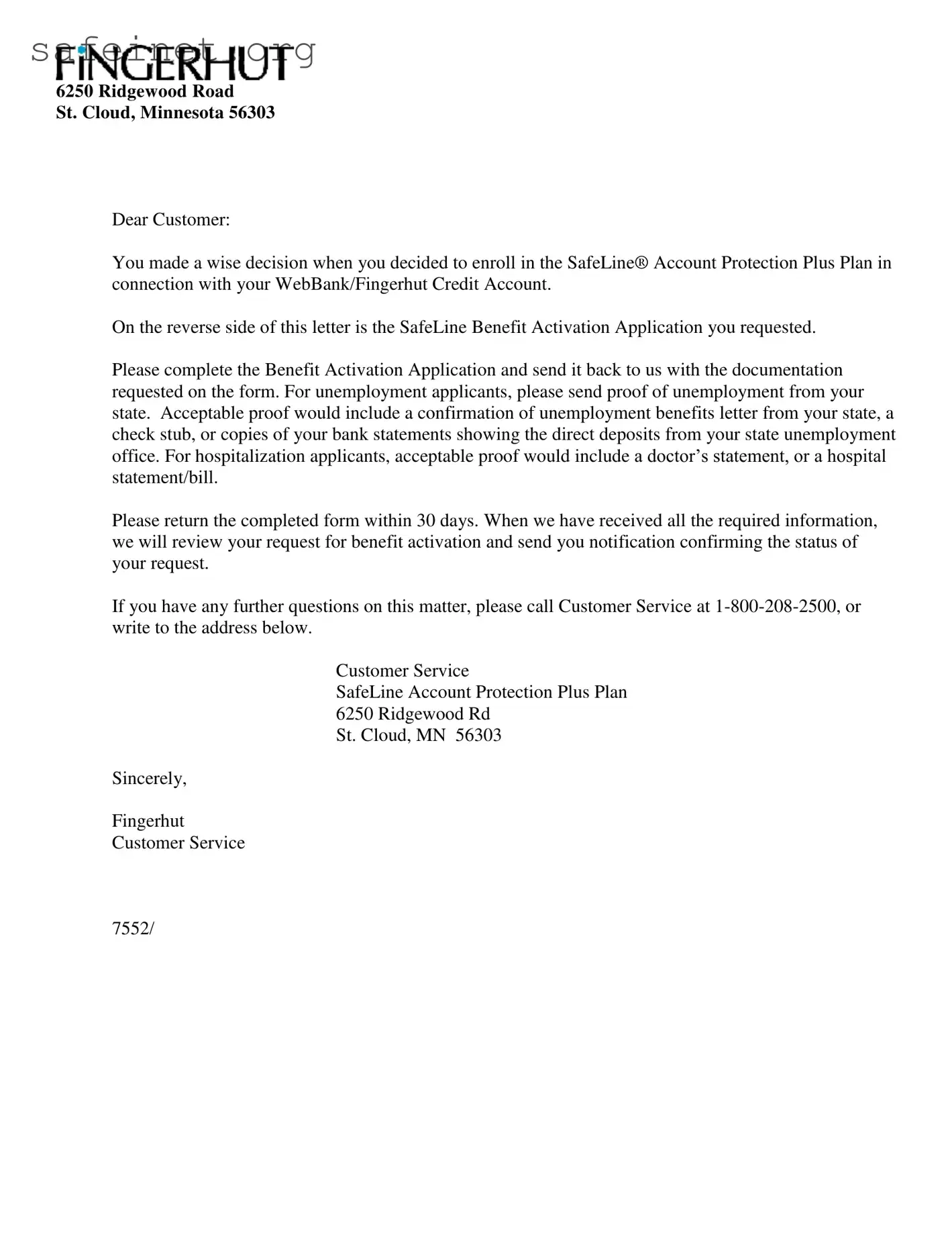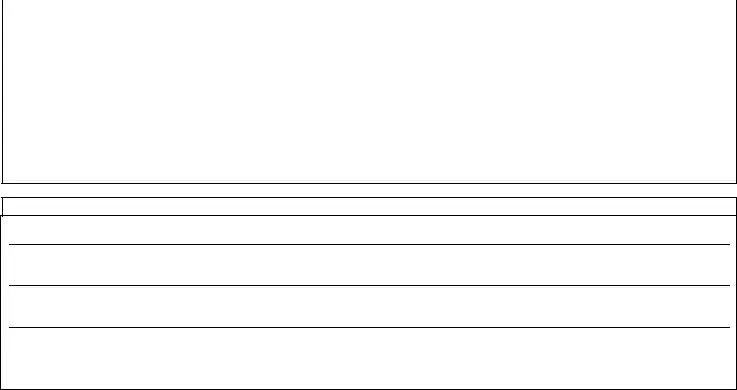The Fingerhut Safeline form bears similarities to the Medical Expense Reimbursement Form frequently utilized in healthcare settings. Both documents require the submission of personal details and explicitly outline the necessary documentation for benefit claim eligibility. While the Safeline form focuses on financial assistance during unemployment or medical leave, the Medical Expense Reimbursement Form centers on recovering costs associated with medical treatments. Both emphasize the need for supporting documents, such as bills or statements, to validate the claims made by the applicant.
Another comparable document is the Disability Claim Form often used in conjunction with disability insurance policies. This form requests detailed medical information and employment data, mirroring the Safeline form's structure. In both cases, applicants must provide proof of their condition, which can include doctor's statements or hospitalization records. The Disability Claim Form, like the Safeline form, requires the claimant’s authorization for medical information release, ensuring that all necessary documentation is obtained to process the claim effectively.
The Family Medical Leave Act (FMLA) Certification Form is another document that shares key attributes with the Fingerhut Safeline form. Both forms deal with applications for leave due to medical reasons. Similar to the Safeline form, the FMLA Certification Form requires medical documentation and can include statements about the employee’s ability to perform job duties. Each form demands a clear and thorough outline of the circumstances surrounding the leave, emphasizing the importance of proper documentation to support the request.
Additionally, the Unemployment Benefits Claim Form provided by state agencies exhibits similarities to the Safeline form. Both focus on collecting personal details, employment status, and reasons for financial assistance requests. Claimants of both forms must submit proof, such as termination letters or benefit confirmation letters, to validate their circumstances. The urgency to return these forms within specified timeframes, like the 30-day period mentioned in the Safeline document, is common between the two.
The Health Insurance Portability and Accountability Act (HIPAA) Authorization Form is also relevant. Like the Fingerhut Safeline form, it includes an authorization section allowing the disclosure of personal health information. This ensures that medical details are shared appropriately when processing claims. Both forms recognize the necessity of obtaining permission to access sensitive information, underscoring the importance of privacy and confidentiality in the claims process.
The Short-Term Disability Claim Form is another document that mirrors the Safeline approach to claim submissions. Applicants must provide personal identification, employment history, and medical evidence to prove their claims. As with the Safeline form, this document emphasizes strict deadlines for submission and the necessity of complete medical statements to expedite the approval process. The focus on financial relief during a period of incapacity creates a strong link between the two forms.
The Leave of Absence Request Form is yet another document that resonates with the Safeline form’s intent. It details the type of leave requested, similar to the claim types outlined on the Safeline form. Both documents require the supporting evidence to substantiate the request for leave and, in instances of medical leaves, clarification of the applicant's condition. The procedural aspects in both forms aim to facilitate smooth processing of requests, demonstrating a shared commitment to prompt and accurate claims management.
Finally, the Workers' Compensation Claim Form represents another analog. Both documents seek to document the circumstances surrounding a claim related to employment disruptions. Workers’ compensation forms require detailed information about the injury or illness and its impact on work, paralleling the Safeline form’s request for evidence of unemployment or medical leave. Each form seeks to provide financial support to individuals facing hardships due to health-related issues, necessitating thorough documentation for effective assistance.


